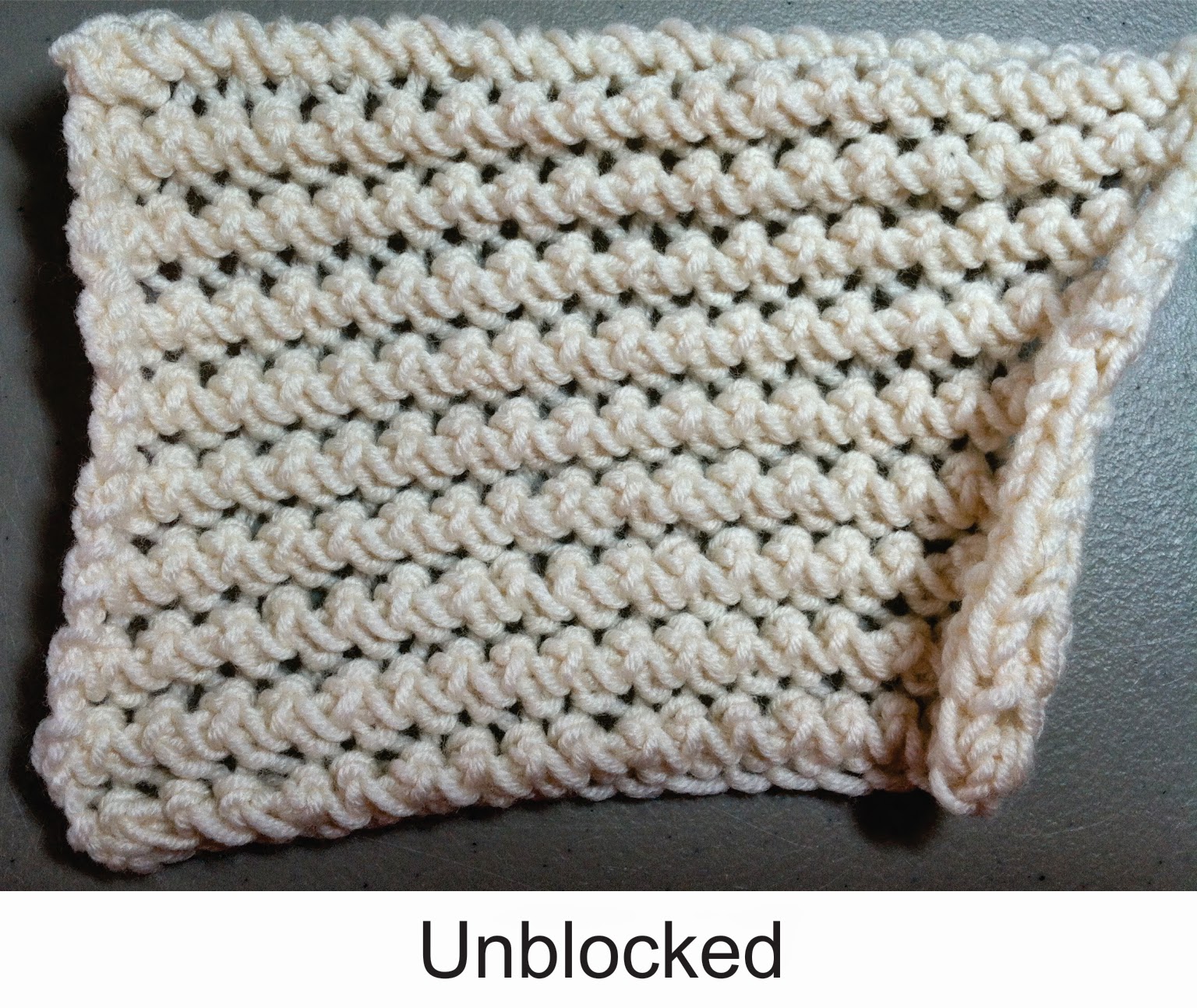 I
have more ideas for modifying "Old Shale", most notably using
eccentric increases and/or putting the decreases on different rows
than the increases. By "eccentric", I was thinking of
drawing up new stitches through various places in previous rows. I
would decrease them out over several rows so that the new stitches
would fan out over the background. It was a nice thought, but I ended
up with a mass of strands I couldn't identify and decreases that did
not correspond to the increases they were supposed to. I still like
the idea; I filed my notes and swatches and I'm going to let the idea
simmer for a while. In the meantime, I started a swatch where I drew
up stitches and decreased them out quickly. And that created a topic
for the next few posts.
I
have more ideas for modifying "Old Shale", most notably using
eccentric increases and/or putting the decreases on different rows
than the increases. By "eccentric", I was thinking of
drawing up new stitches through various places in previous rows. I
would decrease them out over several rows so that the new stitches
would fan out over the background. It was a nice thought, but I ended
up with a mass of strands I couldn't identify and decreases that did
not correspond to the increases they were supposed to. I still like
the idea; I filed my notes and swatches and I'm going to let the idea
simmer for a while. In the meantime, I started a swatch where I drew
up stitches and decreased them out quickly. And that created a topic
for the next few posts. Unlike knitting in a row below the next stitch and allowing the intervening stitches to drop, these pattern stitches keep all the previous rows intact. For this reason, they can be done on every stitch in a row without the row below completely unraveling. The process puts little crimps in the fabric, hence the name.
Basic Stitch #1 (Notice that patterning is worked on the WS.)
Cast on any number of stitches, plus 2 for selvedges. Use a needle 1 or 2 sizes larger than the one you will be knitting with.
Rows 1 & 3 (RS): Purl.
Row 2: Knit.
Row 4: K1. Insert RN from front into st 3 rows below next st on needle and knit up a st. Place the new st on LN without twisting it and k2tog-b. Continue until 1 st rem; k1.
On the first pass through the pattern, the new stitches will be drawn up in the sts on the cast-on row as shown in the diagram. (I used a knitted on cast-on.) The patterning produces enlarged sts which will be three rows below when the next patterning row is worked.
Bind off loosely in pattern Row 4.
 This stitch biases wildly before it is blocked. I used superwash Merino wool for this swatch. When wet, it is an extremely malleable material, so I was able to block it to get the result above. Obviously, it's important to block your swatch before you start a project, especially if you plan to use synthetic yarn. (Need I add that this is a good practice anyway?)
This stitch biases wildly before it is blocked. I used superwash Merino wool for this swatch. When wet, it is an extremely malleable material, so I was able to block it to get the result above. Obviously, it's important to block your swatch before you start a project, especially if you plan to use synthetic yarn. (Need I add that this is a good practice anyway?)Next up will be the purl version of the basic stitch. Until then . . .


No comments:
Post a Comment